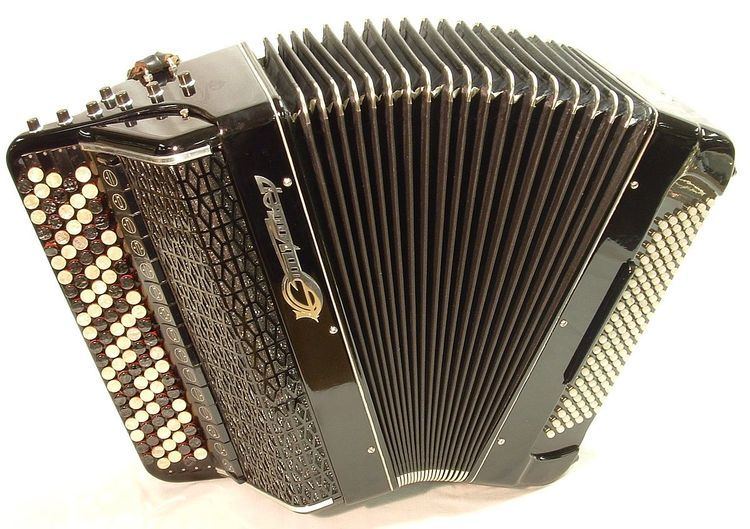Hornbostel–Sachs classification 421.221-12 | ||
 | ||
The bayan (Russian: бая́н; [bɐˈjan]) is a type of chromatic button accordion developed in Russia in the early 20th century and named after the 11th-century bard Boyan.
Characteristics
The bayan differs from western chromatic button accordions in some details of construction:
The differences in internal construction give the bayan a different tone color from Western instruments, and the bass has a much fuller sound. Because of their range and purity of tone, bayans are often the instrument of choice for accordion virtuosi who perform classical and contemporary classical music. Two Soviet composers of note who wrote compositions for bayan are Vladislav Zolotaryov and Sofia Gubaidulina. Russian Bayan virtuoso Stas Venglevski has premiered contemporary works by Yehuda Yannay, Anthony Galla-Rini and William Susman. In his work Drang (1999), John Palmer has pushed the expressive possibilities of the bayan to the limits of virtuosity.
